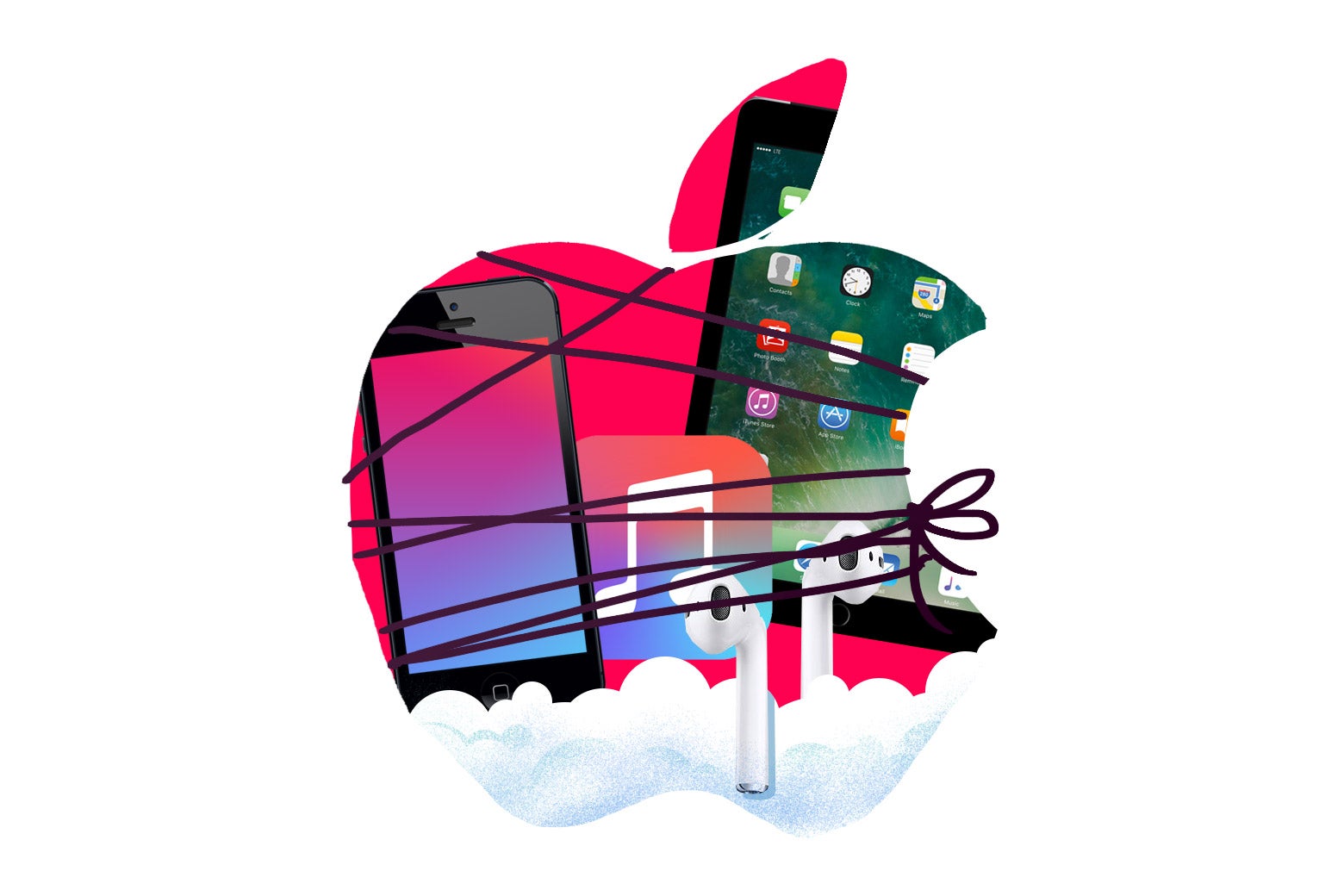In its first-quarter earnings report last week, Apple shared that it once again made a record amount of money—to the tune of $20 billion in profit and $88 billion in revenue, largely from iPhone sales. Curiously, however, it actually sold about 1 million fewer iPhones than it did this time last year. Many financial analysts expected this year to be an iPhone “super cycle,” a huge sales boom for the company that typically occurs with the debut of a new iPhone design, but it hasn’t shaped up that way. In the face of evolving smartphone-purchasing dynamics and the growing success of its underhyped services division, Apple could temper its tempestuous and cyclical hardware sales patterns by introducing a new option for consumers: As prominent Apple analyst Horace Dediu of Asymco suggested, Apple could offer a bundled services subscription.
In the Wall Street Journal on Monday, Dediu posits that Apple could resolve its quarterly financial discrepancies by fully bowing to the fact that it’s an ecosystem provider—and giving consumers an all-inclusive subscription payment option for the services in that ecosystem. “Throw in health monitoring, an iCloud subscription, Apple Music, Apple’s original programming and more into a cable-television-like bundle, or a la carte, and Apple could go from being a hit-driven company to one that throws off predictable, consistent, subscription-based revenue,” the Wall Street Journal writes. “Think of it as Apple Prime.”
Apple offers a number of different services that iOS users can pay for on a monthly basis: extra iCloud storage (which ranges from $0.99–$9.99 per month), Apple Music (which costs $9.99 per month or $99.99 per year for an individual subscription), media subscriptions (such as Netflix, HBO Now, or Spotify), AppleCare+ (its extended warranty program), and its iPhone Upgrade Program. As it stands, these various subscriptions are fragmented, which can make them more difficult to manage and track. iOS lets you manage media subscriptions, such as Apple Music, within one section of your iPhone settings, but other Apple-centric purchases, such as additional iCloud storage packages, are located in a different area of the settings menu. If you want to subscribe to each of these things, it can be tedious.
By lumping all of these services into a discounted all-in-one package (or an à la carte version where customers can easily select which options they’re interested in), Apple could streamline its service offerings. This would make them more attractive and accessible to iOS users—and more profitable to its bottom line. With such an option, iPhone owners may opt into Apple subscriptions they might not otherwise have paid for. It would also be of benefit to iPhone users by reducing some of the frictions of the iOS experience, making their upfront monthly payment amount clearer, making it easier to manage their subscriptions, making the iOS settings menu easier to navigate, and minimizing the number of system notifications popping up on screen.
The “iPhone storage almost full” message is one of the most annoying and persistent notifications many iOS users experience. The solution—as Apple not-so-subtly hints at with these alerts—is to purchase additional iCloud storage and move some of that locally stored phone media and data into the cloud. The notification itself, as well as the idea of needing to pay for extra storage when your device already comes with plenty, is so irritating that most of us just ignore it or delete a handful of old photos, videos, or unused apps to make some extra space for a few weeks, at which point the alert will rear its head again. If Apple’s upgrade program, which costs as low as $34.99 per month and guarantees a new iPhone upgrade each year, offered an option to tack on iCloud storage into that monthly payment too, iOS users might decide to buy in.
Apple is seeing solid growth in some of its service areas, such as Apple Music, which may overtake Spotify in subscribers later this year, but it could further boost paid membership if it was included as part of a “Here’s everything you need for your new iPhone” service package—something that might add one step to the already lengthy iPhone setup process but would ensure iPhone users have access to all the features Apple offers. Such an option could also make it easier for iOS users to check out Apple’s upcoming original video programming. Apple’s made a $1 billion investment into original programming, which includes an in-the-works show starring Reese Witherspoon and Jennifer Aniston, and these shows live within Apple Music, for the time being.
According to an informal poll of more than 3,000 readers on Apple blog 9to5Mac, more than two-thirds of respondents either “love” or “like” the idea of an all-in-one Apple subscription (as of the writing of this post). Clearly, a simplified, all-encompassing subscription option is potentially appealing not just to newer iOS users setting up some of these payments but also to those indoctrinated into Apple’s ecosystem and hoping to streamline that management and billing process. Hopefully, among the subtle tweaks Apple will be making in iOS 12, we’ll also get an option for easier subscription management. It makes good business sense for Apple and would improve user experience for iPhone owners.
